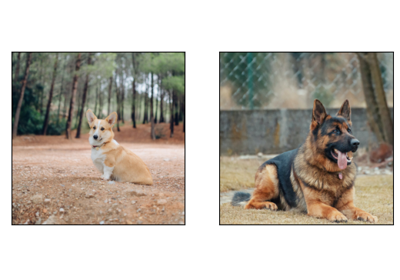RandomCrop
-
class
torchvision.transforms.RandomCrop(size, padding=None, pad_if_needed=False, fill=0, padding_mode='constant')[source] Crop the given image at a random location. If the image is torch Tensor, it is expected to have […, H, W] shape, where … means an arbitrary number of leading dimensions, but if non-constant padding is used, the input is expected to have at most 2 leading dimensions
- Parameters
size (sequence or int) – Desired output size of the crop. If size is an int instead of sequence like (h, w), a square crop (size, size) is made. If provided a sequence of length 1, it will be interpreted as (size[0], size[0]).
padding (int or sequence, optional) –
Optional padding on each border of the image. Default is None. If a single int is provided this is used to pad all borders. If sequence of length 2 is provided this is the padding on left/right and top/bottom respectively. If a sequence of length 4 is provided this is the padding for the left, top, right and bottom borders respectively.
Note
In torchscript mode padding as single int is not supported, use a sequence of length 1:
[padding, ].pad_if_needed (boolean) – It will pad the image if smaller than the desired size to avoid raising an exception. Since cropping is done after padding, the padding seems to be done at a random offset.
fill (number or tuple) – Pixel fill value for constant fill. Default is 0. If a tuple of length 3, it is used to fill R, G, B channels respectively. This value is only used when the padding_mode is constant. Only number is supported for torch Tensor. Only int or tuple value is supported for PIL Image.
padding_mode (str) –
Type of padding. Should be: constant, edge, reflect or symmetric. Default is constant.
constant: pads with a constant value, this value is specified with fill
edge: pads with the last value at the edge of the image. If input a 5D torch Tensor, the last 3 dimensions will be padded instead of the last 2
reflect: pads with reflection of image without repeating the last value on the edge. For example, padding [1, 2, 3, 4] with 2 elements on both sides in reflect mode will result in [3, 2, 1, 2, 3, 4, 3, 2]
symmetric: pads with reflection of image repeating the last value on the edge. For example, padding [1, 2, 3, 4] with 2 elements on both sides in symmetric mode will result in [2, 1, 1, 2, 3, 4, 4, 3]
Examples using
RandomCrop:-
forward(img)[source] - Parameters
img (PIL Image or Tensor) – Image to be cropped.
- Returns
Cropped image.
- Return type
PIL Image or Tensor


